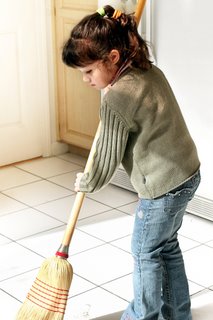 Grace and courtesy skills sound so nice. Wouldn’t we all love to have homes and classrooms where the children were courteous, helpful, and kind? Sometimes it seems like an unachievable goal. It’s true that kids need much repetition to master these skills, but the sooner you start the better. How and when do we go about teaching these necessary lessons? Here are some skills listed by age, and at the end you’ll find a sample lesson that can be modified for any of the skills listed.
Grace and courtesy skills sound so nice. Wouldn’t we all love to have homes and classrooms where the children were courteous, helpful, and kind? Sometimes it seems like an unachievable goal. It’s true that kids need much repetition to master these skills, but the sooner you start the better. How and when do we go about teaching these necessary lessons? Here are some skills listed by age, and at the end you’ll find a sample lesson that can be modified for any of the skills listed.
Toddler:
Eating Habits
* Using fork and spoon correctly
* Chewing food with mouth closed
* Asking to be excused from a meal
* Sitting quietly in chair during meal
Toilet Training
* How and when to go to the bathroom
Proper Hygiene
* How to wash hands
* How to brush teeth correctly
* How to blow your nose quietly
Preschool:
Social Skills
* How to greet people, using titles of respect when indicated
* How to shake hands when greeting someone
Manners
* How to excuse oneself when walking in front of someone
* How to interrupt when necessary
* How to hand objects to another person, especially sharp objects like scissors or
knives
* How to say “please” and “thank you”
Care of Environment
* How to care for a pet
* How to water a plant correctly
* How to clean up a spill
* How to open and shut a door quietly
* How to pick up and carry a chair correctly
Elementary:
Social Skills
* How to work with another person
* How to resolve conflict
* How to mediate between friends
* How to help a younger child
Manners
* Writing a thank-you note
* Speaking politely to friends, family, and teachers
* Being kind to others (treat them the way you want to be treated)
Environment
* How to care for plants and animals
* Setting up a table for a meal
* How to clean and straighten a classroom or room at home
* How to serve in the community
* Recycling and other ways to care for the earth
A sample presentation:
The teacher would call the children together on the line, and place a chair in the middle of the circle. (All the lessons of grace and courtesy are group lessons). She would pick up the chair correctly (from the side, one hand on the back and one hand under the seat) and carry it to a table. Then she would bring the chair back and invite each child, in turn, to carry the chair the same way.
Once the presentation has been given, the teacher would look for times when the children could exercise their new skill (“Bobby, could you please bring a chair over here?”) and also look for times when an individual might need a re-presentation if they are not doing the skills correctly.

